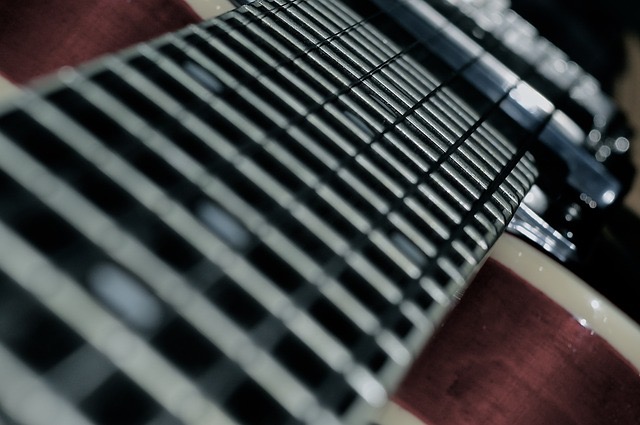
Altered Blues Scale On Guitar
It’s not unusual for a lead guitarist to go back and forth between major and minor pentatonic scales within the same solo. It’s not exactly the same, but the fact that the altered blues scale has both the minor 3rd interval and the major 3rd interval, means that the altered blues scale somewhat mimics that movement of going between the major and minor pentatonic scale.
An Altered Blues Scale is built with the intervals 1, b3, 3, 4, b5, 5, b7. The scale can be thought of as a minor pentatonic scale with the Major 3 and b5 intervals added.
The Altered Blues Scale, even though called a “blues” scale, is a scale that is used in all genres of music. It has a couple of notes that can cause bite, or tension. Specifically, the b5 interval which is frequently referred to as the “blue note”. This makes for some interesting licks that can create tension and release.
Altered Blues Scale 5th Fret (A)


How To Use The Altered Blues Scale
The Altered Blues Scale is used to build licks in both major and minor settings. It is often used when a dominant 7 chord is being sounded in the chord progression.(A7, Am7, A13, A7#9 etc.) It is also often coupled with other scales like the Major or Minor Pentatonic.
* What is the Blues Scale
* What are some Blues Licks
* What Is The Minor Pentatonic Scale
* What Is the Major Pentatonic Scale
* How To Practice The Altered Blues Scale
What Is The Blues Scale
The Blues Scale is built with the intervals 1 b3 4 b5 5 b7. The b5 interval is the note which gives it a distinctive sound.

What are Some Blues Licks
With blues licks, you don’t want to be too rigid. Allow yourself some wiggle room to put some of yourself into each phrase. Jimi, Eric, and Jeff can all play the same lick and yet at the same time all sound distinctively unique. You should as well.
Bending notes is one technique that is common in blues. Bending a note is also one of the most expressive techniques. You can make the guitar moan, weep, sing, or be exhilarated with the right touch on a string bend.



These are a few examples of licks. The advantage to memorizing “licks” rather than just knowing the scales, its that the licks are like sentences rather than just words. They flow from your fingers and make sense to you and your listeners.

What Is The Minor Pentatonic Scale
The Minor Pentatonic Scale is frequently the first scale that a guitarist will learn how to play.
It is a well worn scale pattern that many blues and rock guitar players have used as the primary foundation of their sound and licks. One of the neat things about the scale, is that it can be found within other scales and modes. For example, the notes of the minor pentatonic scale can be found within the Blues Scale, the Dorian Mode, the Phrygian Mode, the Aeolian Mode, and the Altered Blues Scale.
The scale is built of 5 notes which are 1, b3, 4, 5, & b7 intervals. (1 is the key center).

The minor pentatonic scale could be considered the frame work which the altered blues scale is built around. In other words, Altered Blues Scale is built by adding a major 3rd interval and a flat 5 interval to the minor pentatonic scale. Some players find it easier to remember by visualizing it like that.
What Is The Major Pentatonic Scale
The Major Pentatonic Scale has this scale formula: 1, 2, 3, 5, 6.
The 2 and the 6 are the two intervals that are not shared, or rather found within the Altered Blues Scale.
When this scale is played by itself it has a distinctively major sound. However, when mixed with the Altered Blues Scale, or when bouncing between the two scales, some interesting lines can be created or improvised.
How To Practice The Altered Blues Scale
Start by getting a grip on the undercarriage of the Altered Blues Scale. In other words, start by practicing the frame which is holding it up. That would be the minor pentatonic scale. As we mentioned before, the Altered Blues Scale could be looked at as if it was a Minor Pentatonic scale with the Major 3rd and Flat 5 scale degrees added to it.
Play up and down the minor pentatonic scale several times. Next, play through the minor pentatonic scale calling out each scale degree as you play it.
Then, add the flat 5 interval to the minor pentatonic and run that pattern up and back several times. This is the Blues Scale, which is a minor pentatonic scale with the flat 5 interval added. As before, do the same thing where you play each note of the scale while simultaneously naming the interval that you are playing.
Finally, follow that same practice format with the Altered Blues Scale. Practicing this way will not only build your skill level, but also reinforce your knowledge of intervals.
Minor Pentatonic Scale

Blues Scale

Altered Blues Scale

